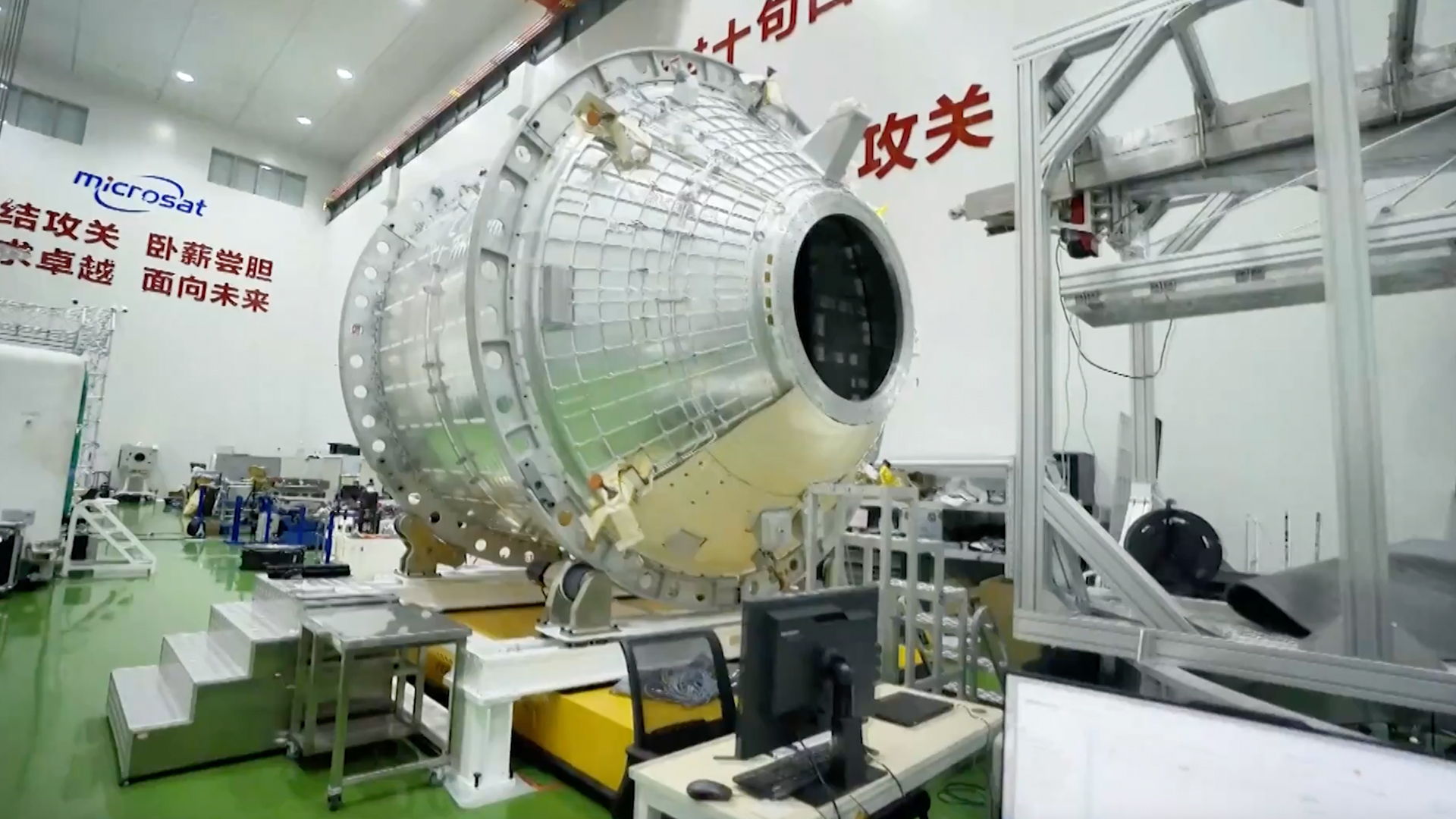SpaceX Test-Fires 'Starhopper' Starship Prototype, Creates Big Fireball
But Starhopper apparently emerged relatively unscathed.
As the world celebrates the 50th anniversary of one of humanity’s greatest achievements — putting people on the moon — SpaceX is busy preparing for its next giant leap: sending humans to Mars.
To that end, the California-based aerospace company conducted a static-fire test of Starhopper, a prototype of its Mars-colonizing Starship vehicle, late Tuesday (July 16) in South Texas ahead of a planned test flight of the craft. (SpaceX performs such engine firings before all of its launches, to ensure that the relevant systems are ready to fly.)
The test, which lasted approximately 5 seconds, seemed to be successful, although bright orange flames engulfed the vehicle after its single Raptor engine fired. A video by the Everyday Astronaut's Tim Dodd shows the brilliant fireball in slow motion.
Related: SpaceX's 'Starship' Prototype Coming Together in Florida (Photos)
Crews were able to detank and power down Starhopper following the test fire. And on Wednesday morning (July 17), onlookers confirmed that the squat-looking silver prototype appeared unscathed.
While there appears to be no visible damage to the craft's reflective skin, delicate electronics and other systems could tell a different story. Wednesday morning, crews were spotted underneath the hopper, surveying the area.
Here's some views by Starship watchers on Twitter.
Breaking space news, the latest updates on rocket launches, skywatching events and more!
Here’s full speed, full static fire of @SpaceX’s #StarHopper! If you want to see this and the subsequent fireball in slow motion, hit the link for it in its 4K glory! Curious as to what damage was done @elonmusk https://t.co/8LcTfP5wEW pic.twitter.com/UbKRztXY4NJuly 17, 2019
#StarHopper stands proudly after last nights testing🔥 Crews were up underneath it this morning performing work already. Hopefully whatever caused the secondary fire last night can be mitigated quickly and they can get to hoppin' again soon!⚙️/⬇️/🖼: https://t.co/YTbkFXS0kH pic.twitter.com/aiLZRxQpwNJuly 17, 2019
Human for scale👷🏻♂️Here's a view of Raptor this morning as crews underneath the #StarHopper began to survey the results of last nights static fire testing.⚙️/⬇️/🖼: https://t.co/vVzcgX3EX5 pic.twitter.com/IJK7WJ1IhLJuly 17, 2019
Taking people to Mars
Starhopper is designed to pave the way for Starship, a 100-passenger vehicle that SpaceX hopes will one day take humans and cargo to destinations far beyond low-Earth orbit.
This first version of Starhopper is powered by a single Raptor engine, which is still in development. The next-generation engine is fueled by a combination of liquid methane and liquid oxygen and packs about twice the punch of the Merlin engines currently powering the company's Falcon series of rockets.
SpaceX is still in the early stages of Starhopper testing, but the company expects the shiny prototype will eventually be powered by three Raptor engines. Starship will have six, and that vehicle's Super Heavy rocket will sport 31 Raptors.
SpaceX is building a second, similar Starhopper prototype in Florida, and it hopes that a little friendly intraoffice competition will yield the best design.
Path to first untethered hop
Starhopper already has two brief test flights under its belt, but the craft was tethered to the ground on both occasions. The upcoming hop will be the first time Starhopper is allowed to fly free.
Earlier this month, SpaceX founder and CEO Elon Musk has tweeted that the upcoming leap (which is expected to reach an altitude of 66 feet, or 20 meters) could take place on July 16 — the 50th anniversary of the launch of NASA's Apollo 11 moon mission..
But the company didn't meet that target, opting instead to take time for more prep work. The highly anticipated untethered hop is likely now on hold pending a data review following the static-fire test.
- SpaceX's Starship and Super Heavy Mars Rocket in Pictures
- See the Evolution of SpaceX's Rockets in Pictures
- SpaceX's Raptor Engine Hits Power Level for Starship Launches
Follow Amy Thompson on Twitter @astrogingersnap. Follow us on Twitter @Spacedotcom or Facebook.

Amy Thompson is a Florida-based space and science journalist, who joined Space.com as a contributing writer in 2015. She's passionate about all things space and is a huge science and science-fiction geek. Star Wars is her favorite fandom, with that sassy little droid, R2D2 being her favorite. She studied science at the University of Florida, earning a degree in microbiology. Her work has also been published in Newsweek, VICE, Smithsonian, and many more. Now she chases rockets, writing about launches, commercial space, space station science, and everything in between.
